Advanced Plasticity Modeling for Ultra-Low-Cycle-Fatigue Simulation of Steel Pipe
Abstract
:1. Introduction
- (1)
- isotropic hardening model combined with von Mises, Hill and facet yield loci.
- (2)
- linear kinematic hardening model in combination with von Mises and Hill yield loci.
- (3)
- combined hardening model combined with von Mises and Hill yield loci.
2. ULCF Testing and FE Simulation Setup
2.1. Experimental Test Setup
2.2. Finite Element Simulation Setup
3. Material Model Description
3.1. Pipe Material
3.2. Plastic Strain Hardening
3.2.1. Mechanical Tests
3.2.2. Strain Hardening Models
- (1)
- For the isotropic hardening, the Voce hardening law is used:which defines the evolution of the flow stress , as a function of the equivalent plastic strain . Here, is the yield stress; is the change of yield surface size at saturation; and b is the rate at which the yield surface grows as plastic straining develops. The stress-strain is calibrated from the quasi-static tension tests presented in Figure 6. For isotropic hardening, the back stress .
- (2)
- For the linear kinematic hardening, the evolution law (3) describes the translation of the yield surface in stress space through the backstress with constant hardening modulus :
- (3)
- The evolution law of combined hardening model consists of two components: (i) a nonlinear kinematic hardening component as:in which the kinematic hardening modulus and kinematic hardening exponent are calibrated from cyclic test data and (ii) an isotropic hardening component Equation (2).
3.3. Plastic Anisotropy
3.3.1. Texture Measurements
3.3.2. Advanced Plasticity Modeling
- (1)
- von Mises: the isotropic von Mises yield function calibrated by giving the value of the uniaxial yield stress as a function of uniaxial equivalent plastic strain.
- (2)
- Hill-average: the anisotropic Hill yield function calibrated by r-values in three directions. The r-values are obtained from the ALAMEL multi-scale model on the basis of the overall average texture.
- (3)
- Hill-gradient: the Hill yield function with different r-value parameters for the different integration points across tube thickness. They are calibrated by the ALAMEL model from the corresponding texture gradient.
- (4)
- Facet: the anisotropic facet yield function with 360 parameters, calibrated to closely reproduce the behavior of ALAMEL under all conceivable deformation conditions.
3.3.3. The Hill-Average Yield Function
3.3.4. The Hill-Gradient Yield Function
3.3.5. The Facet Yield Function
4. Numerical Results of ULCF
4.1. Onset of Buckling
4.2. Strain Evolution
4.2.1. Influence of Anisotropic Yield Locus on Strain Evolution and Buckling Subjected to ULCF
4.2.2. Influence of Strain Hardening on Strain Evolution and Buckling Subjected to ULCF with Hill-Gradient Anisotropic Yield Locus
5. Summary and Conclusions
- 1
- In terms of simulations with different strain-hardening models, the combined hardening model enables predicting accurately the onset of buckling. Compared to isotropic and linear kinematic hardening assumptions, the prediction of buckling is delayed with two bending cycles, resulting in eight or 8.5 cycles in total for the ULCF test setup under consideration, whereas eight cycles are experimentally found.
- 2
- Regarding the yield function assumption, it is systematically found that strain evolution predictions during the ULCF process are closest in agreement with the experiment for the Hill anisotropic model that accounts for the gradient in properties over the tube wall thickness.
- 3
- A significant texture gradient across thickness is observed. The texture anisotropy gradient has an obvious effect on the strain evolution of ULCF simulation and to some degree also on the buckling failure process.
- 4
- Hardening modeling matters more than modeling assumptions regarding the (an-)isotropy (i.e., the choice and calibration of the yield locus) in the simulation of pipeline steel undergoing ULCF.
Acknowledgments
Author Contributions
Conflicts of Interest
References
- Prager, W. Recent developments in the mathematical theory of plasticity. J. Appl. Phys. 1949, 20, 235–241. [Google Scholar] [CrossRef]
- Wu, H.-C. Anisotropic plasticity for sheet metals using the concept of combined isotropic-kinematic hardening. Int. J. Plast. 2002, 18, 1661–1682. [Google Scholar] [CrossRef]
- Chung, K.; Lee, M.-G.; Kim, D.; Kim, C.; Wenner, M.L.; Barlat, F. Spring-back evaluation of automotive sheets based on isotropic-kinematic hardening laws and non-quadratic anisotropic yield functions. Int. J. Plast. 2005, 21, 861–882. [Google Scholar] [CrossRef]
- Hill, R. A theory of the yielding and plastic flow of anisotropic metals. Proc. R. Soc. Lond. 1948, 193, 281–297. [Google Scholar] [CrossRef]
- Mises, R.V. Mechanik der plastischen formänderung von kristallen. ZAMM J. Appl. Math. Mech./Z. Angew. Math. Mech. 1928, 8, 161–185. [Google Scholar] [CrossRef]
- Barlat, F.; Ferreira, D.J.M.; Gracio, J.J.; Lopes, A.B.; Rauch, E.F. Plastic flow for non-monotonic loading conditions of an aluminum alloy sheet sample. Int. J. Plast. 2003, 19, 1215–1244. [Google Scholar] [CrossRef]
- Yoon, J.W.; Barlat, F.; Dick, R.E.; Karabin, M.E. Prediction of six or eight ears in a drawn cup based on a new anisotropic yield function. Int. J. Plast. 2006, 22, 174–193. [Google Scholar] [CrossRef]
- Comsa, D.S; Banabic, D. Plane-Stress Yield Criterion for Highly-Anisotropic Sheet Metals; Numisheet 2008: Interlaken, Switzerland, 2008; pp. 43–48. [Google Scholar]
- Plunkett, B.; Cazacu, O.; Barlat, F. Orthotropic yield criteria for description of the anisotropy in tension and compression of sheet metals. Int. J. Plast. 2008, 24, 847–866. [Google Scholar] [CrossRef]
- Van Houtte, P.; Yerra, S.K.; Van Bael, A. The facet method: A hierarchical multilevel modelling scheme for anisotropic convex plastic potentials. Int. J. Plast. 2009, 25, 332–360. [Google Scholar] [CrossRef]
- Van Houtte, P.; Kanjarla, A.K.; Van Bael, A.; Seefeldt, M.; Delannay, L. Multiscale modelling of the plastic anisotropy and deformation texture of polycrystalline materials. Eur. J. Mech. A/Solids 2006, 25, 634–648. [Google Scholar] [CrossRef]
- Van Houtte, P.; Gawad, J.; Eyckens, P.; Van Bael, B.; Samaey, G.; Roose, D. Multi-scale modelling of the development of heterogeneous distributions of stress, strain, deformation texture and anisotropy in sheet metal forming. Procedia IUTAM 2012, 3, 67–75. [Google Scholar] [CrossRef]
- Gawad, J.; Van Bael, A.; Eyckens, P.; Samaey, G.; Van Houtte, P.; Roose, D. Hierarchical multi-scale modeling of texture induced plastic anisotropy in sheet forming. Comput. Mater. Sci. 2013, 66, 65–83. [Google Scholar] [CrossRef]
- Eyckens, P.; Mulder, H.; Gawad, J.; Vegter, H.; Roose, D.; van den Boogaard, T.; Van Bael, A.; Van Houtte, P. The prediction of differential hardening behaviour of steels by multi-scale crystal plasticity modelling. Int. J. Plast. 2015, 73, 119–141. [Google Scholar] [CrossRef]
- Gawad, J.; Banabic, D.; Van Bael, A.; Comsa, D.S.; Gologanu, M.; Eyckens, P.; Van Houtte, P.; Roose, D. An evolving plane stress yield criterion based on crystal plasticity virtual experiments. Int. J. Plast. 2015, 75, 141–169. [Google Scholar] [CrossRef]
- Gawad, J.; Banabic, D.; Comsa, D.S.; Gologanu, M.; Van Bael, A.; Eyckens, P.; Van Houtte, P.; Roose, D. Evolving Texture-Informed Anisotropic Yield Criterion for Sheet Forming. AIP Conf. Proc. 2013, 1567, 350–355. [Google Scholar]
- Kanvinde, A.M. Micromechanical Simulation of Earthquake-Induced Fracture in Steel Structures. Available online: http://adsabs.harvard.edu/abs/2004PhDT.......249K (accessed on 5 March 2017).
- Xue, L. A unified expression for low cycle fatigue and extremely low cycle fatigue and its implication for monotonic loading. Int. J. Fatigue 2008, 30, 1691–1698. [Google Scholar] [CrossRef]
- Campbell, F.C. Elements of Metallurgy and Engineering Alloys; ASM International: Geauga County, OH, USA, 2008. [Google Scholar]
- Lubliner, J.; Oliver, J.; Oller, S.; Oñate, E. A plastic-damage model for concrete. Int. J. Solids Struct. 1989, 25, 299–326. [Google Scholar] [CrossRef]
- Martinez, X.; Oller, S.; Barbu, L.G.; Barbat, A.H.; Jesus, A.M.P.D. Analysis of ultra low cycle fatigue problems with the barcelona plastic damage model and a new isotropic hardening law. Int. J. Fatigue 2015, 73, 132–142. [Google Scholar] [CrossRef]
- European Commission. Ultra Low Cycle Fatigue of Steel under Cyclic High-Strain Loading Conditions (ULCF). Available online: http://bookshop.europa.eu/en/ultra-low-cycle-fatigue-of-steel-under-cyclic-high-strain-loading-conditions-ulcf--pbKINA27731/ (accessed on 5 March 2017).
- Vanhoutte, P. Deformation texture prediction: From the taylor model to the advanced lamel model. Int. J. Plast. 2005, 21, 589–624. [Google Scholar] [CrossRef]
- Van Houtte, P. The MTM-FHM Software System Version 2; MTM-KU: Leuven, Belgium, 1995. [Google Scholar]
- Institution, British Standards. Code of Practice for Pipelines. Pipelines Subsea: Design, Construction and Installation. Available online: http://shop.bsigroup.com/ProductDetail/?pid=000000000000289228 (accessed on 5 March 2017).
- Gresnigt, A.M.; Foeken, R.J.V. Local Buckling of Uoe and Seamless Steel Pipes. In Proceedings of the Eleventh International Offshore and Polar Engineering Conference, Stavanger, Norway, 17–22 June 2001. [Google Scholar]
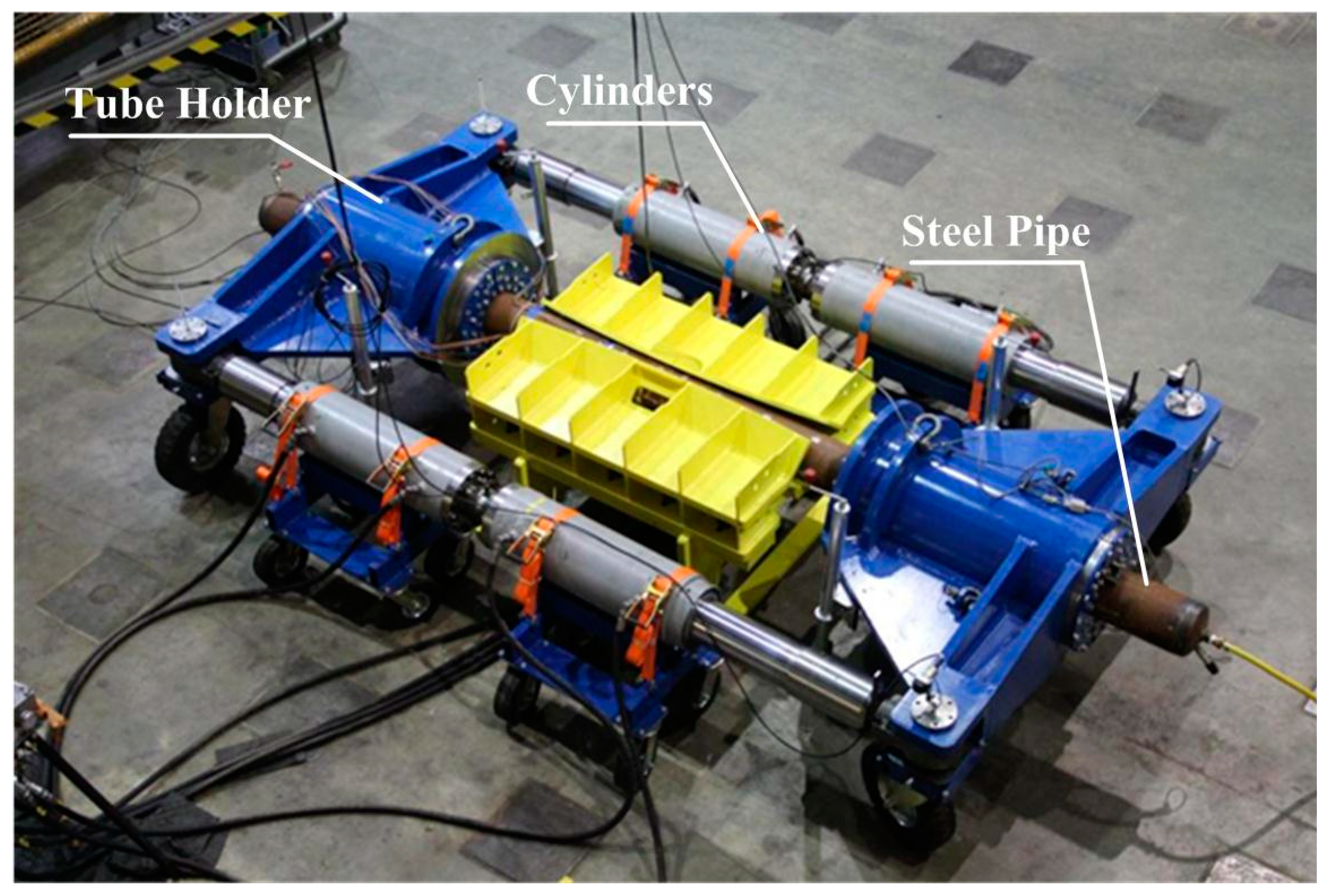
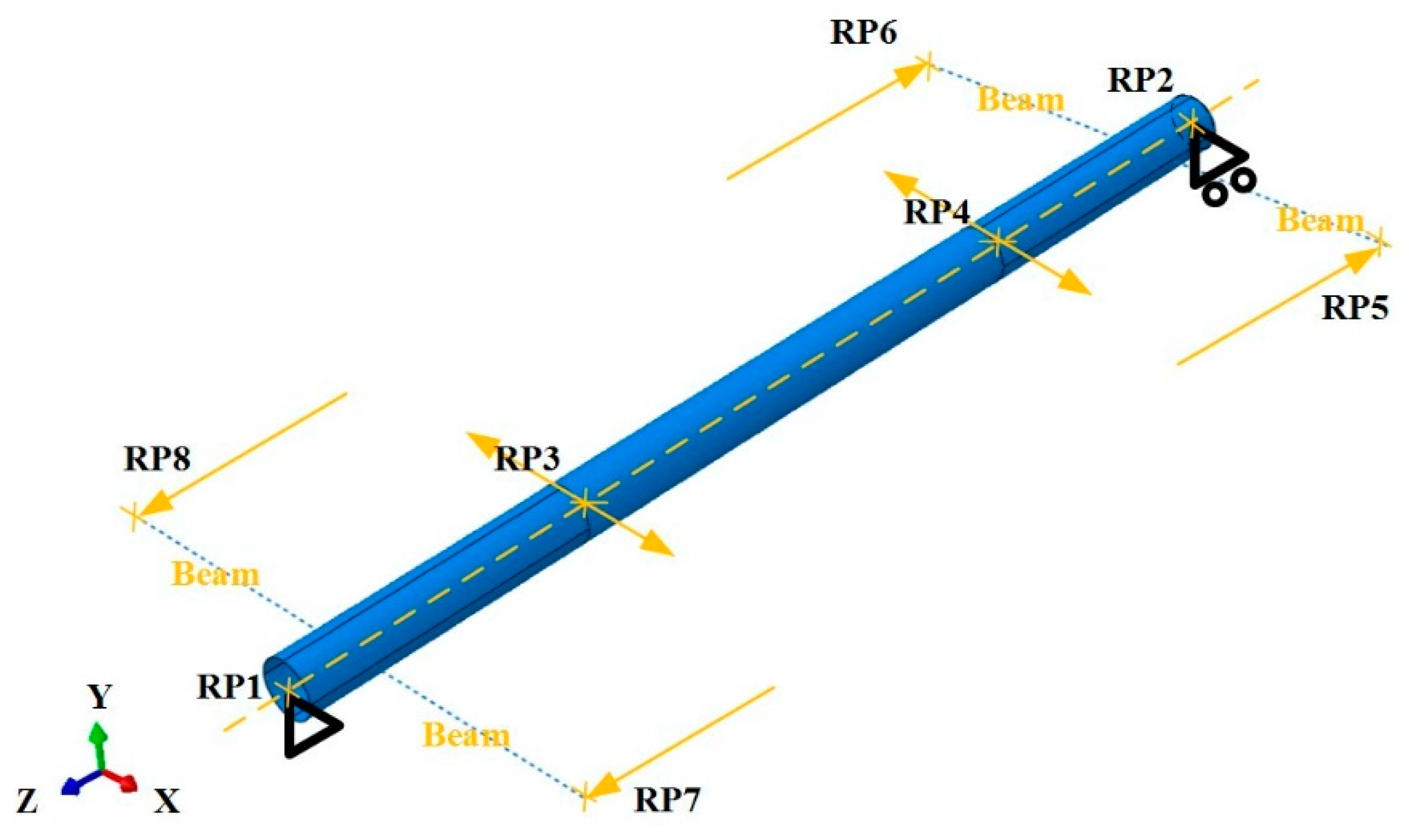
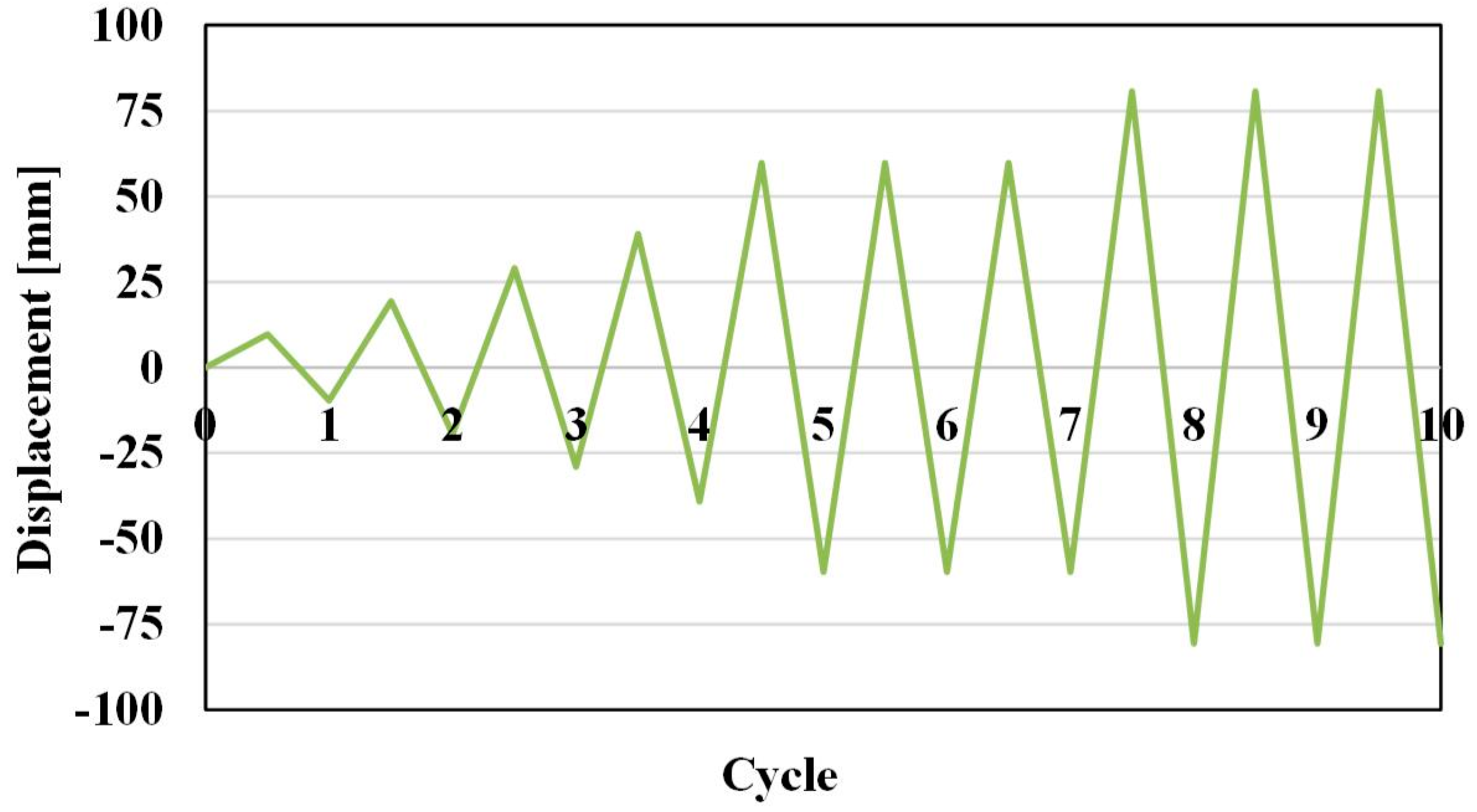

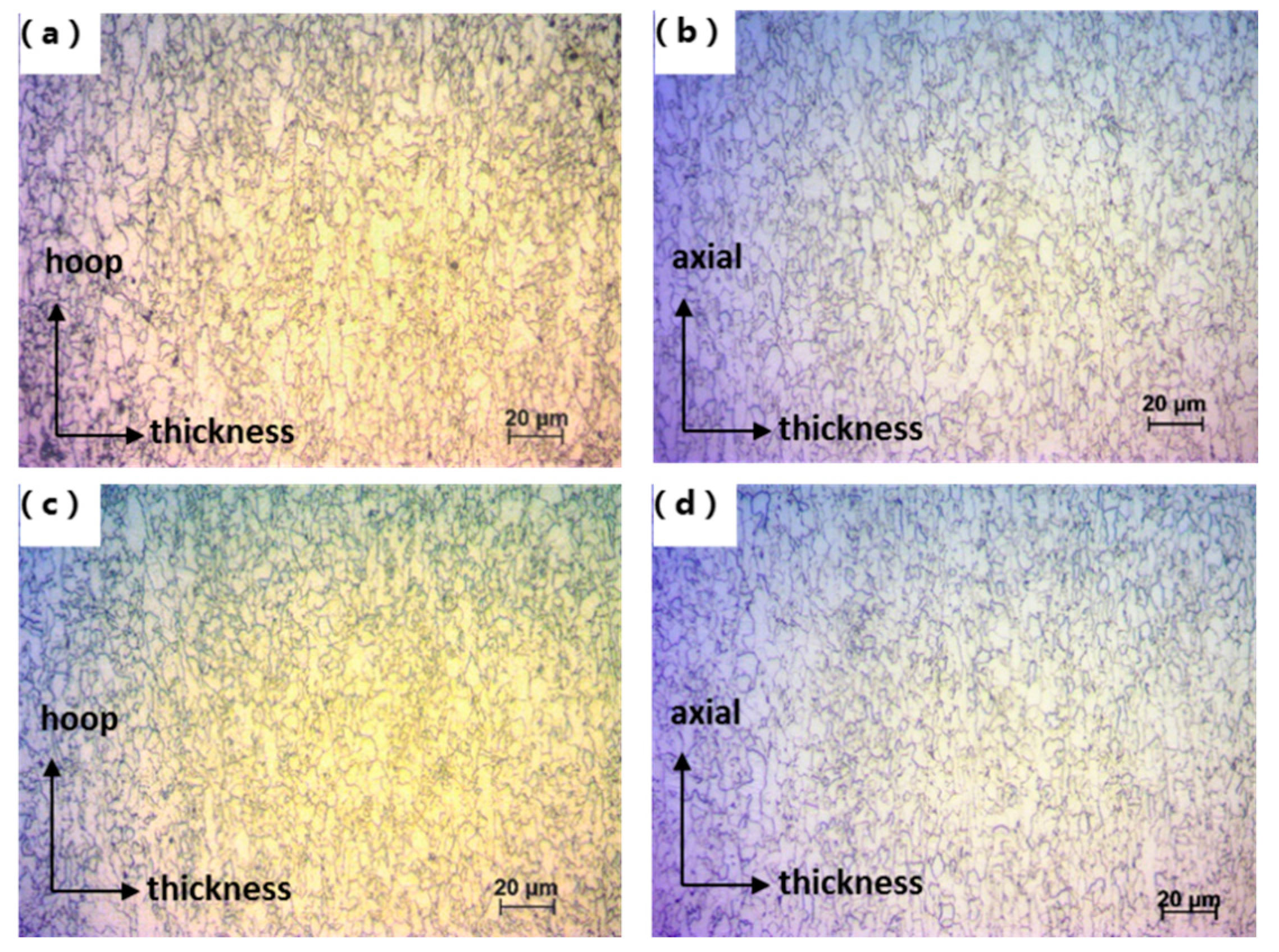
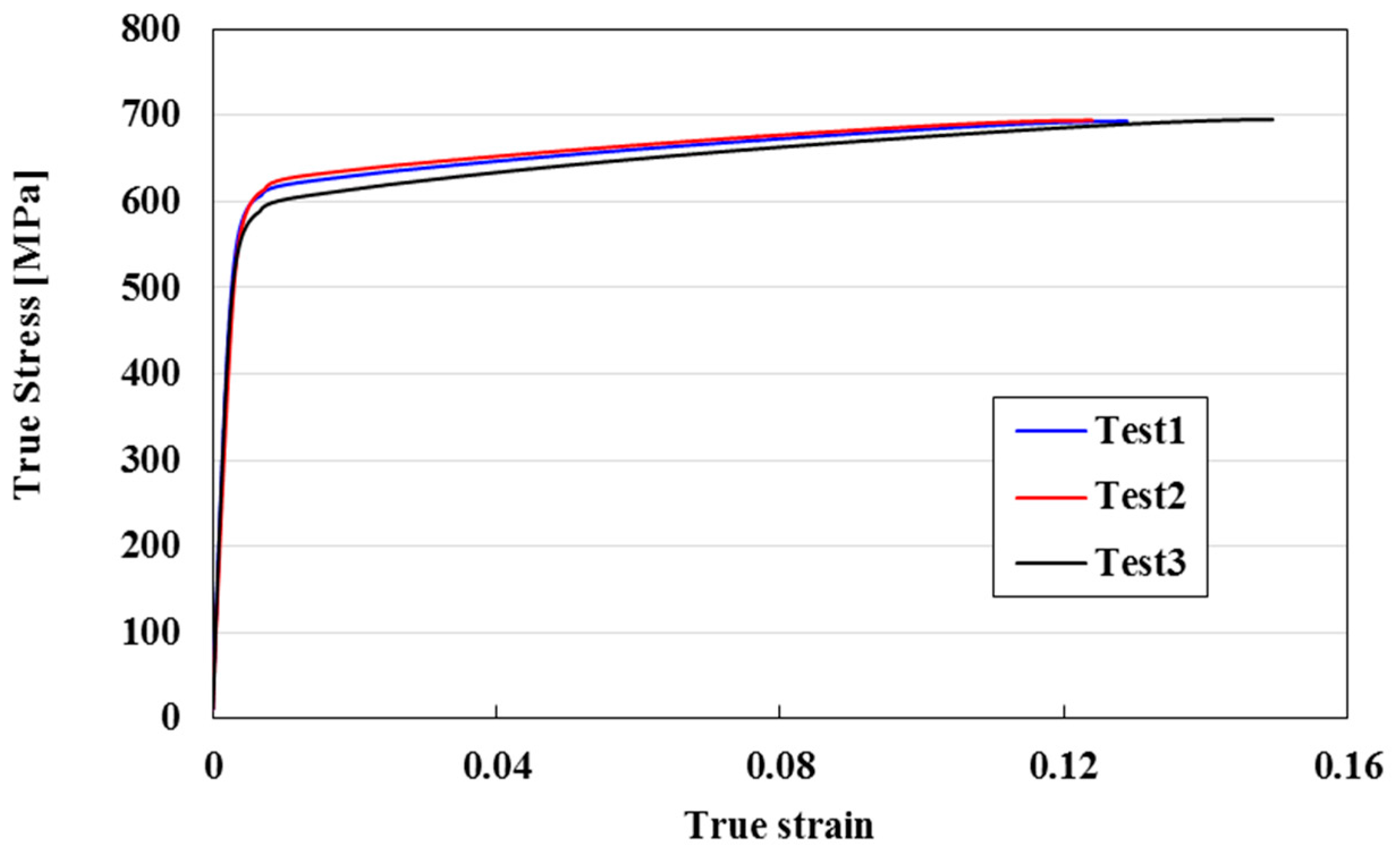
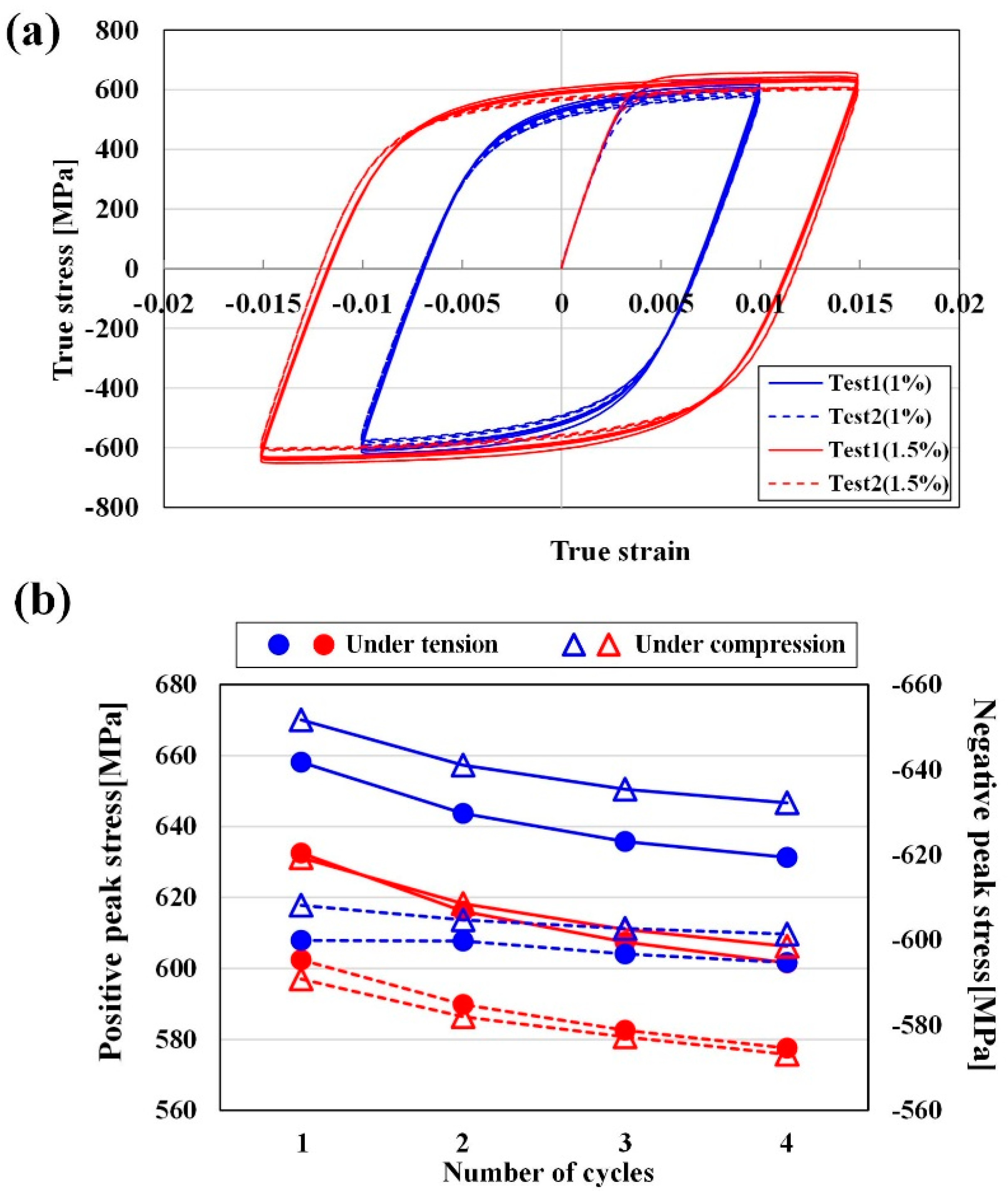
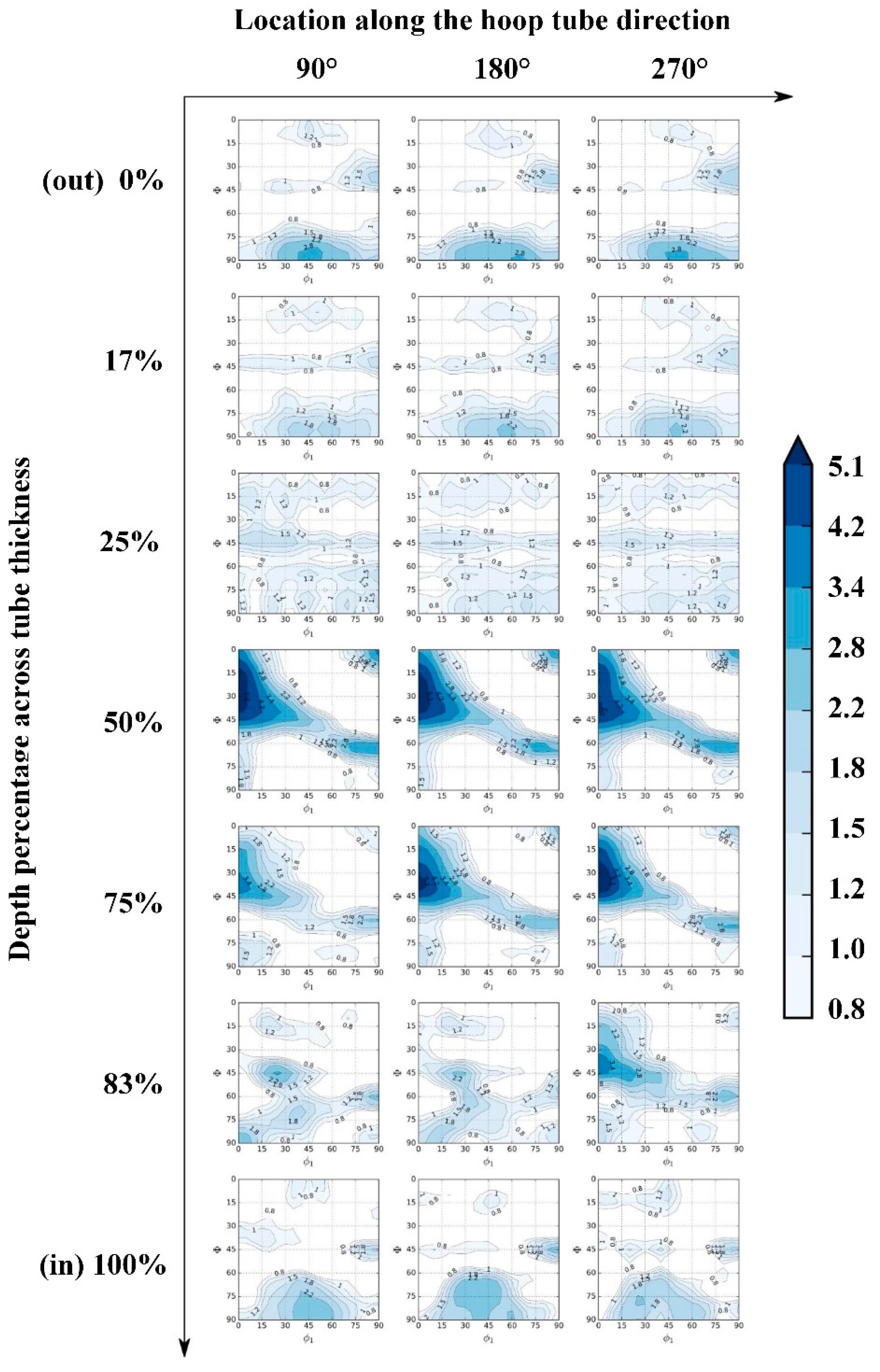

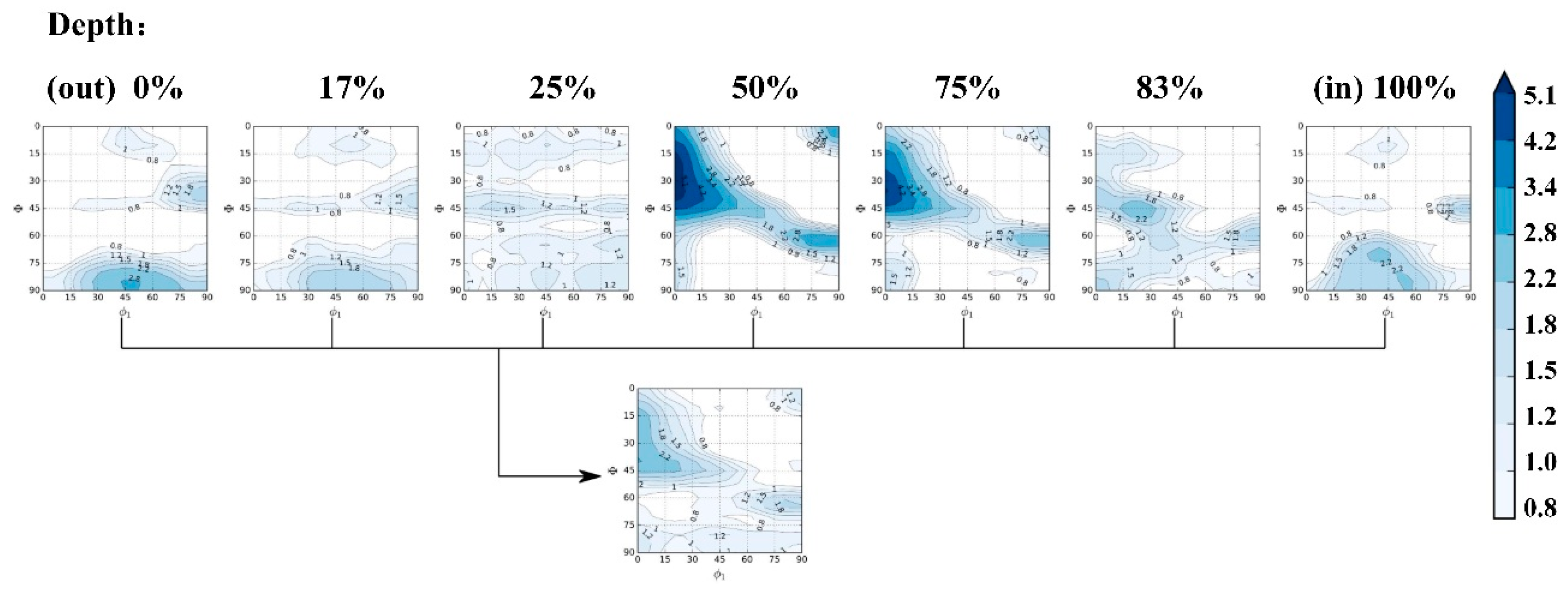


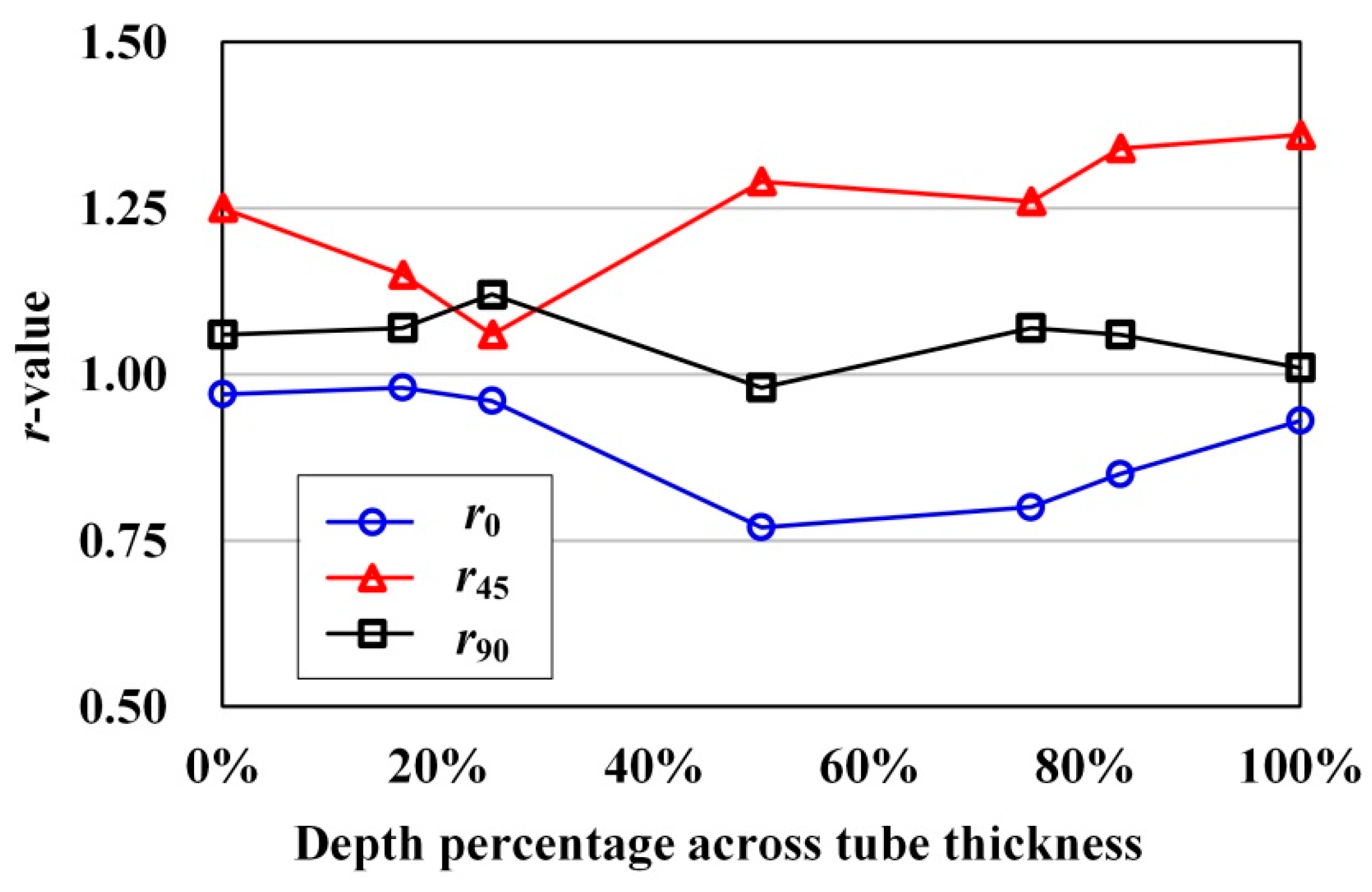

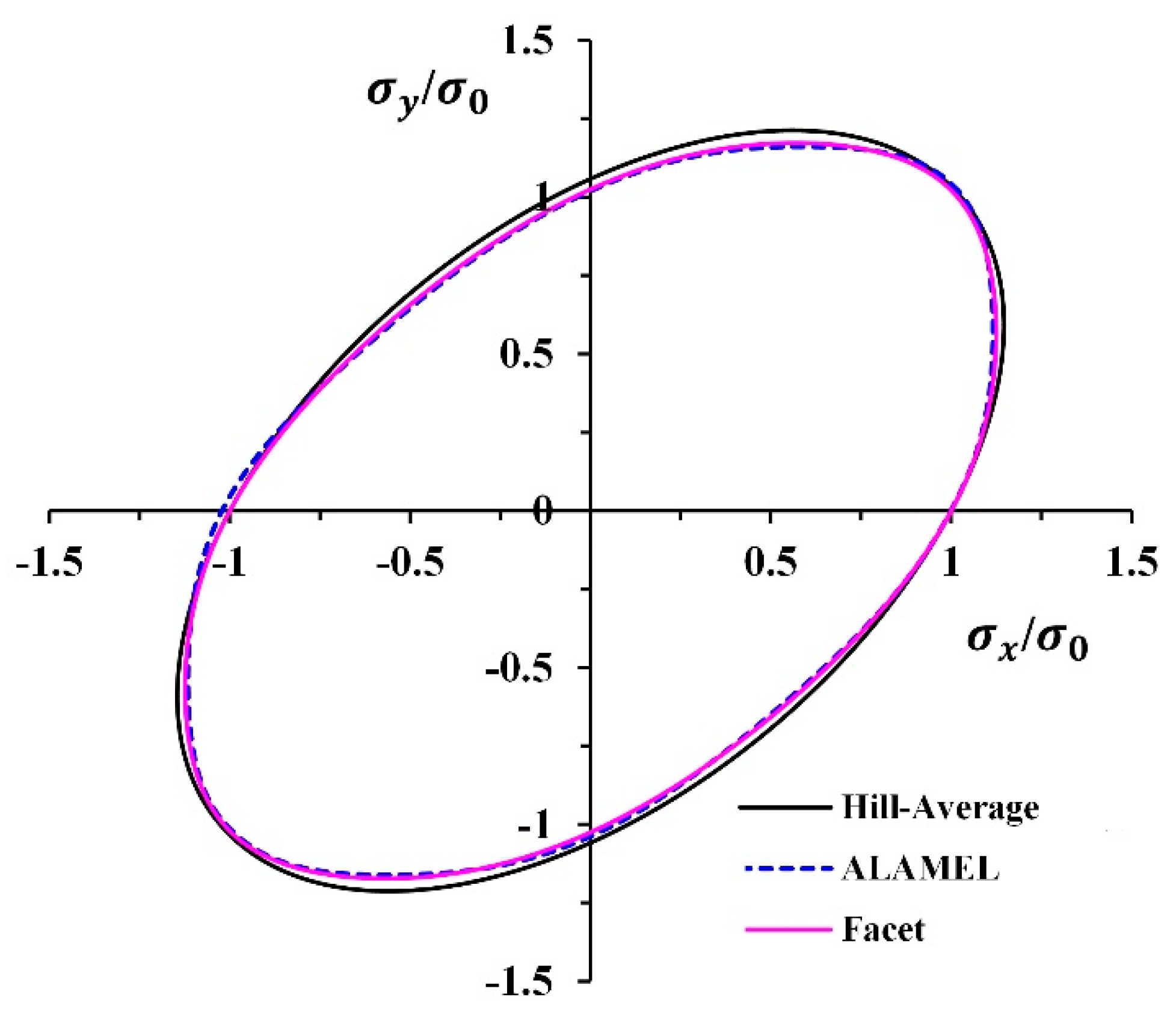
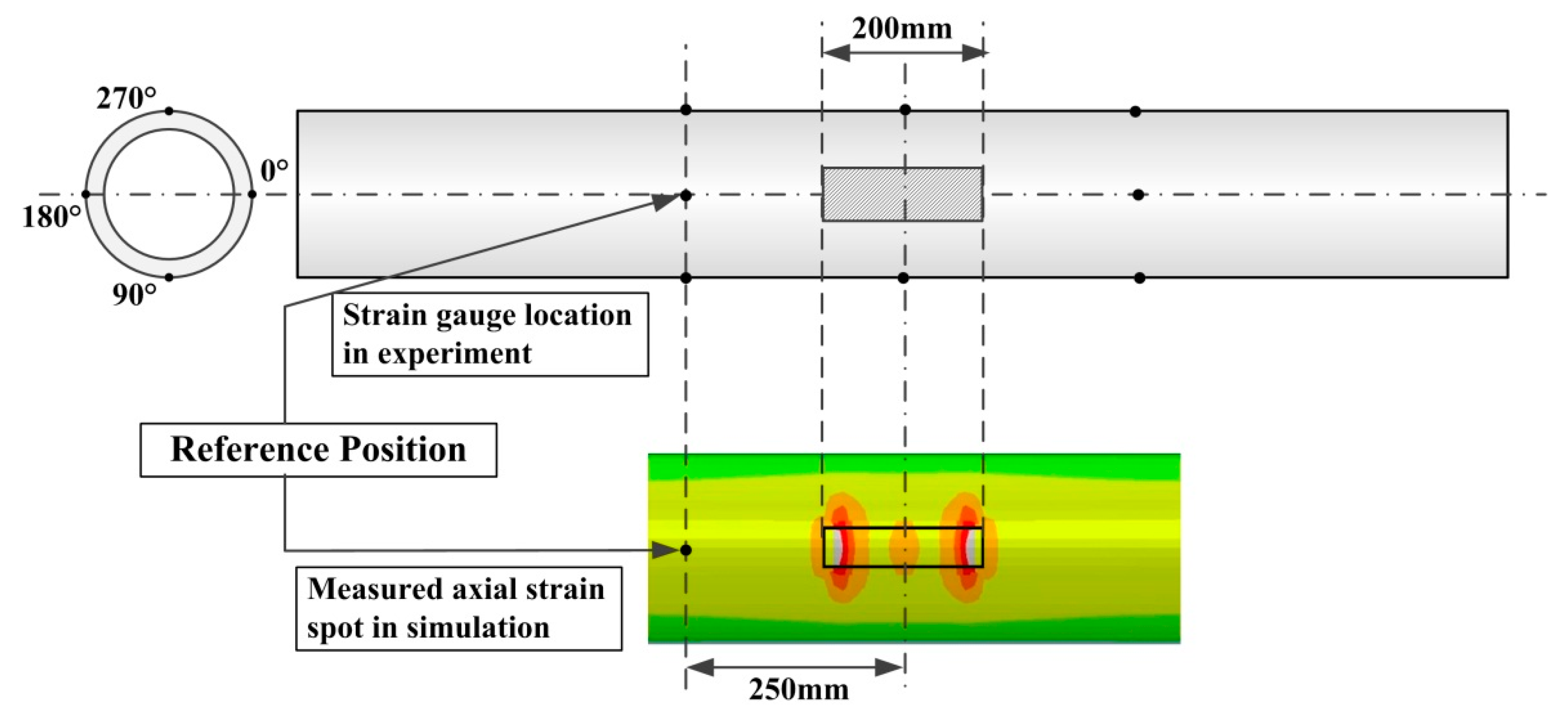
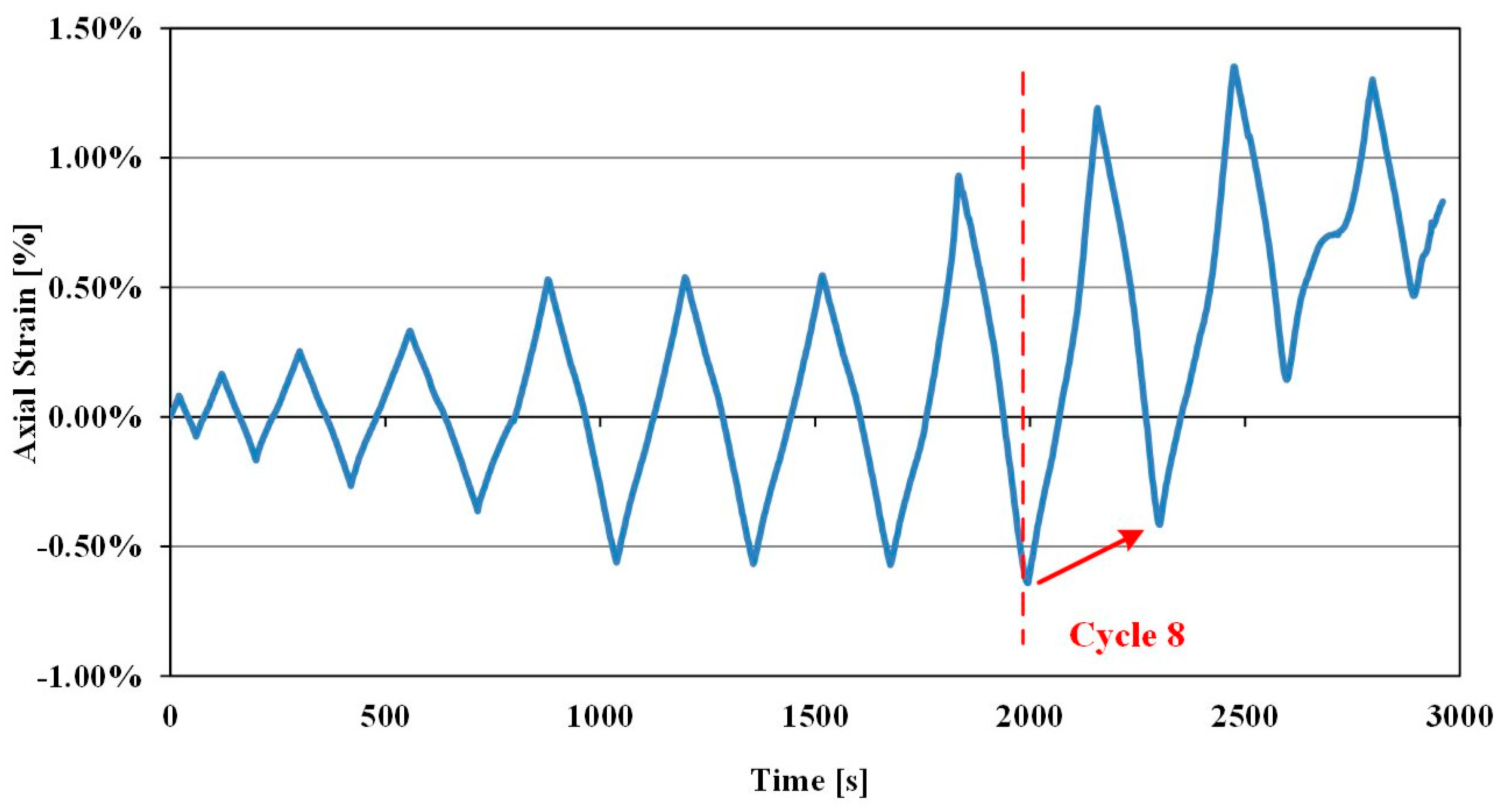
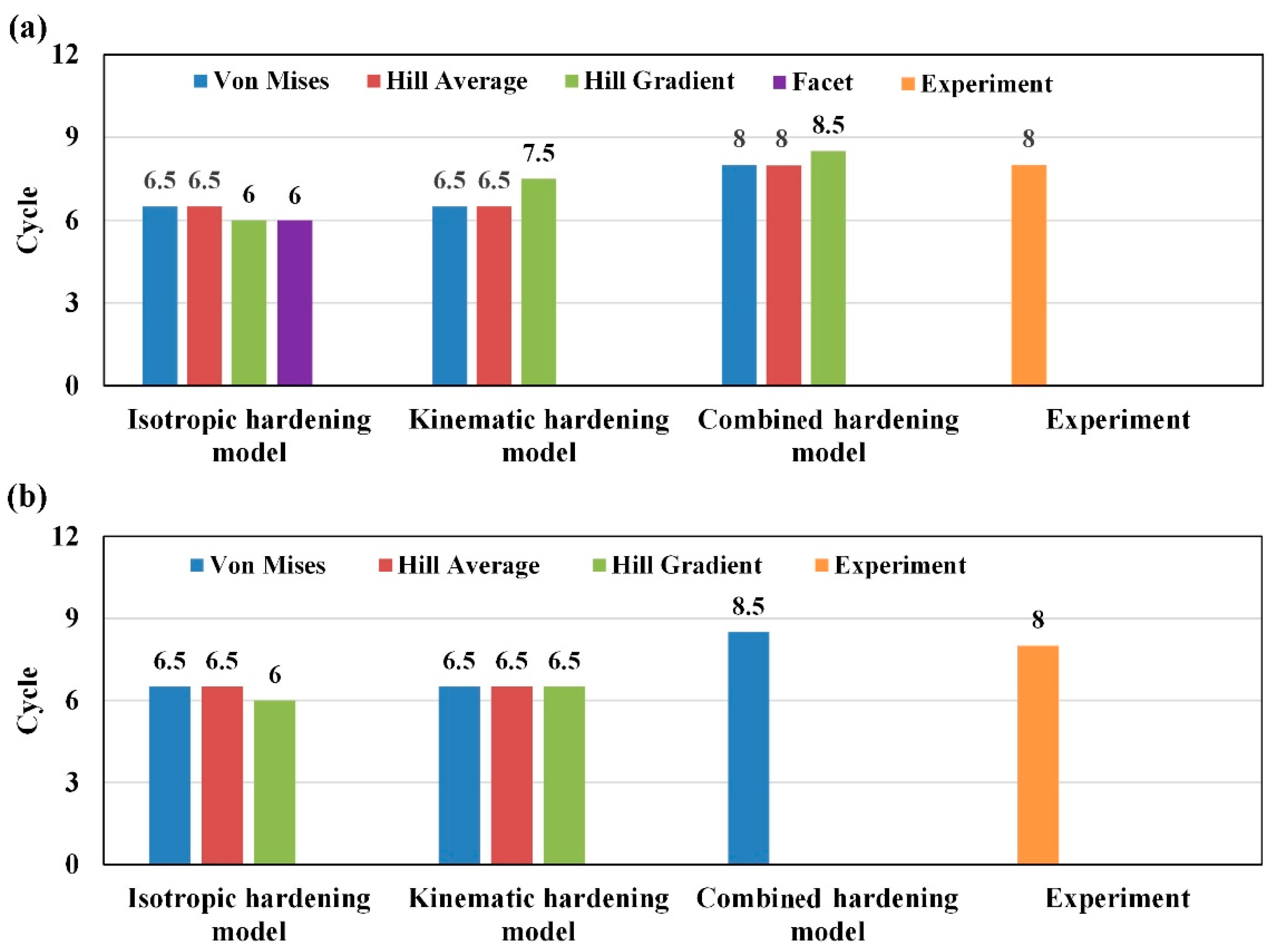

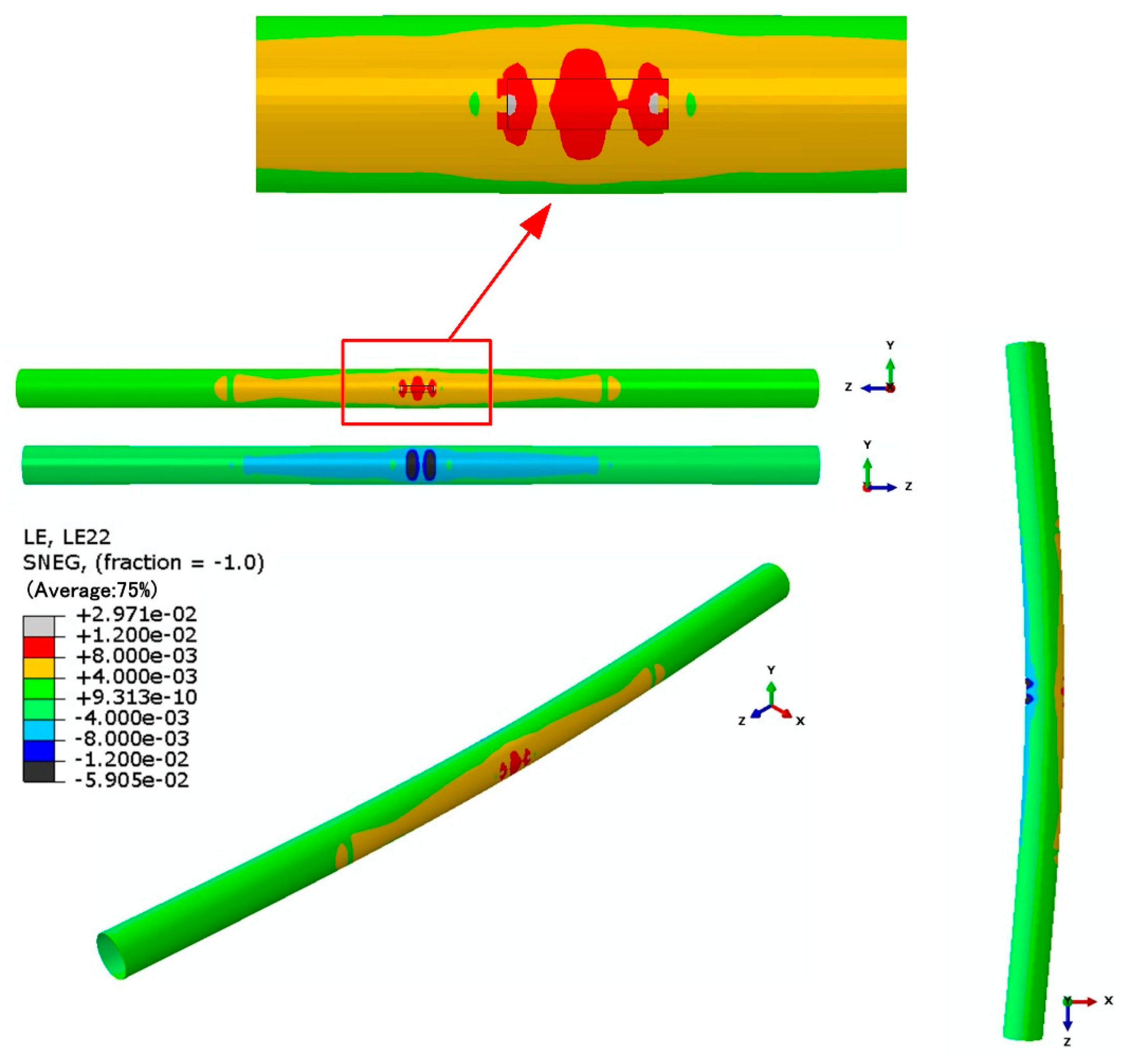
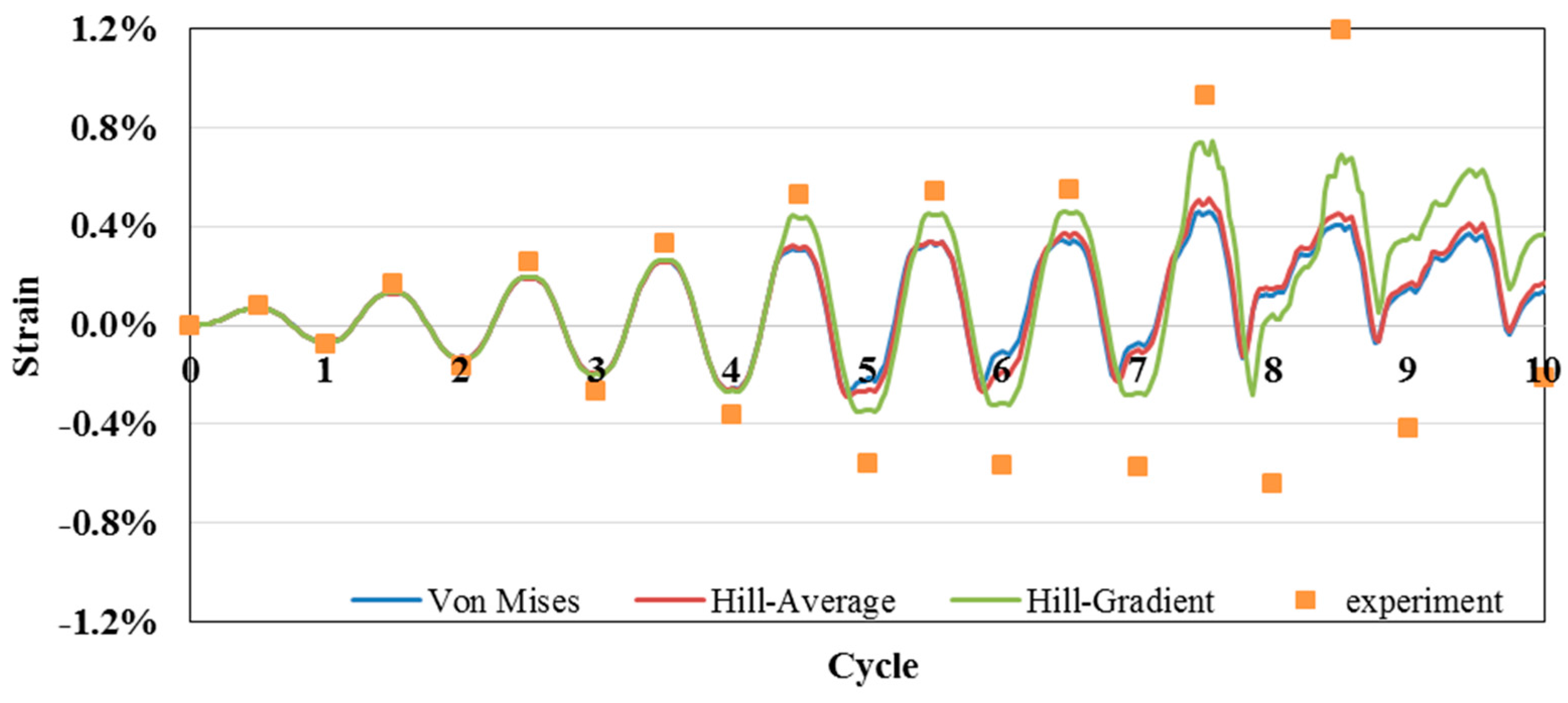
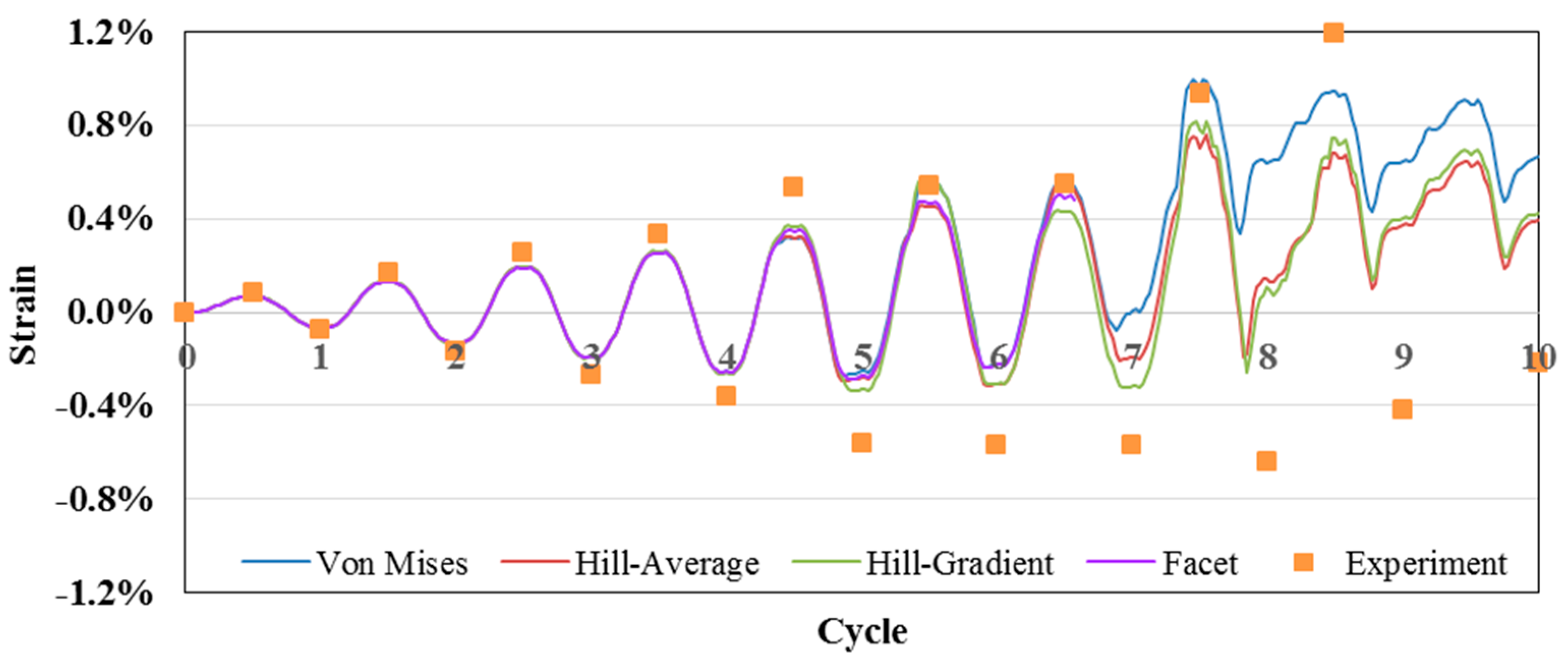
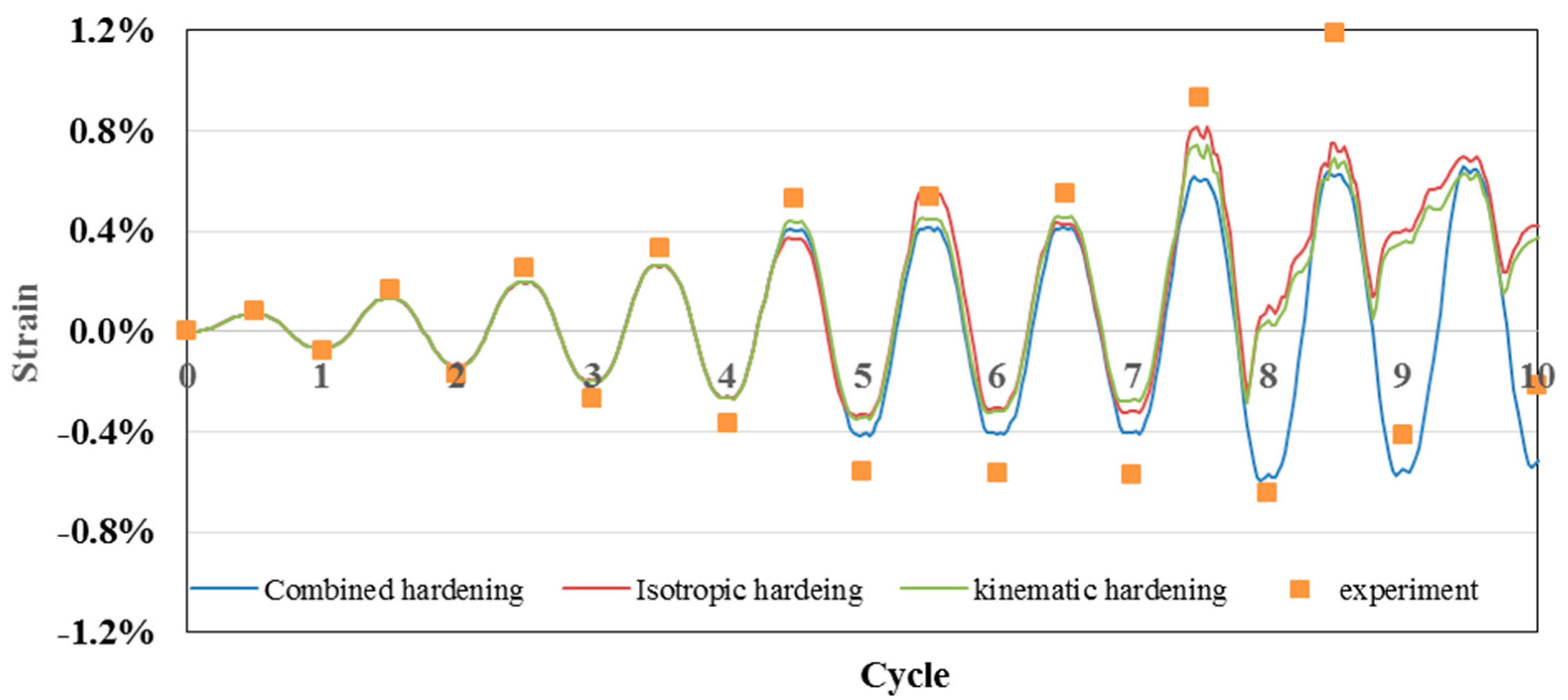
| Hardening Law | Material Parameters | |||
|---|---|---|---|---|
| (MPa) | Tabular Data | |||
| Isotropic hardening | --- | --- | = 760 MPa | |
| B = 0.05 | ||||
| Linear kinematic hardening | 594 | 0 | = 656 MPa | |
| 678 | 0.128 | |||
| Combined hardening | Nonlinear kinematic hardening component | --- | --- | = 600 MPa |
| = 49,376 MPa | ||||
| = 234.351 | ||||
| Isotropic hardening component | 600 | 0 | --- | |
| 444 | 0.044 | |||
| 512 | 1 | |||
| r Value of Overall Merged Texture | |||
|---|---|---|---|
| ALAMEL | r0 | r45 | r90 |
| 0.858 | 1.250 | 1.070 | |
© 2017 by the authors. Licensee MDPI, Basel, Switzerland. This article is an open access article distributed under the terms and conditions of the Creative Commons Attribution (CC BY) license (http://creativecommons.org/licenses/by/4.0/).
Share and Cite
Li, R.; Eyckens, P.; E, D.; Gawad, J.; Poucke, M.V.; Cooreman, S.; Bael, A.V. Advanced Plasticity Modeling for Ultra-Low-Cycle-Fatigue Simulation of Steel Pipe. Metals 2017, 7, 140. https://doi.org/10.3390/met7040140
Li R, Eyckens P, E D, Gawad J, Poucke MV, Cooreman S, Bael AV. Advanced Plasticity Modeling for Ultra-Low-Cycle-Fatigue Simulation of Steel Pipe. Metals. 2017; 7(4):140. https://doi.org/10.3390/met7040140
Chicago/Turabian StyleLi, Rongting, Philip Eyckens, Daxin E, Jerzy Gawad, Maarten Van Poucke, Steven Cooreman, and Albert Van Bael. 2017. "Advanced Plasticity Modeling for Ultra-Low-Cycle-Fatigue Simulation of Steel Pipe" Metals 7, no. 4: 140. https://doi.org/10.3390/met7040140






